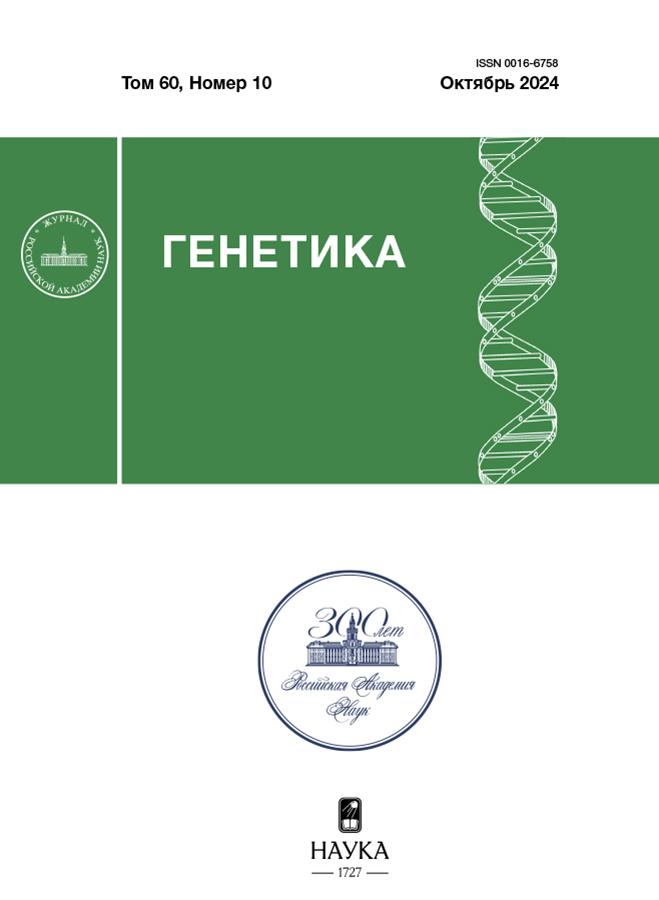The genome of Staphylococcus epidermidis Isolated from Caseous Tuberculoma
- Авторлар: Sinkov V.V.1, Orlova E.A.1, Ogarkov O.B.1, Suzdalnitsky A.E.2,3, Kondratov I.G.1, Belkova N.L.1, Rychkova L.V.1
-
Мекемелер:
- Scientific Сentre for Family Health and Human Reproduction Problems
- Irkutsk Tuberculosum-prevention hospital
- Irkutsk State Medical University
- Шығарылым: Том 60, № 10 (2024)
- Беттер: 129-134
- Бөлім: КРАТКИЕ СООБЩЕНИЯ
- URL: https://rjonco.com/0016-6758/article/view/667191
- DOI: https://doi.org/10.31857/S0016675824100139
- EDN: https://elibrary.ru/wefylg
- ID: 667191
Дәйексөз келтіру
Аннотация
A number of facultative-anaerobic lipophilic microorganisms, including representatives of Corynebacterium and Staphylococcaceae, inhabit the necrotic contents of tuberculomas. A strain of Staphylococcus epidermidis was isolated from caseum, fully genome sequenced, and gene-mapped. The coagulase-negative Staphylococcus belonged to the MLST 73 genotype and was resistant to two antituberculosis drugs. The strain phenotypically had urease, gelatinase and beta-hemolytic activities and possessed the corresponding genes. Similar to S. epidermidis O47, its genome consists of a single chromosome containing approximately 2.4 million base pairs, and oriC has the same orientation. A total of 2333 genes were identified, of which 2206 were coding genes. In contigs of the genome, sequences of plasmid replication genes were found: rep7a, rep13, rep5b and pSK1. Phylogenetic analysis indicates the closeness of the analyzed genome with a large group of European strains. Considering the biochemical and microbiological properties of the isolated strain, we hypothesize that staphylococci and other facultative-anaerobic satellite microorganisms of tuberculosis foci may play an important role in caseum liquefaction due to their own proteolytic activity and attraction of neutrophils to the focus of inflammation.
Негізгі сөздер
Толық мәтін
Авторлар туралы
V. Sinkov
Scientific Сentre for Family Health and Human Reproduction Problems
Email: obogarkov@mail.ru
Ресей, Irkutsk, 664003
E. Orlova
Scientific Сentre for Family Health and Human Reproduction Problems
Email: obogarkov@mail.ru
Ресей, Irkutsk, 664003
O. Ogarkov
Scientific Сentre for Family Health and Human Reproduction Problems
Хат алмасуға жауапты Автор.
Email: obogarkov@mail.ru
Ресей, Irkutsk, 664003
A. Suzdalnitsky
Irkutsk Tuberculosum-prevention hospital; Irkutsk State Medical University
Email: obogarkov@mail.ru
Ресей, Irkutsk, 664039; Irkutsk, 664003
I. Kondratov
Scientific Сentre for Family Health and Human Reproduction Problems
Email: obogarkov@mail.ru
Ресей, Irkutsk, 664003
N. Belkova
Scientific Сentre for Family Health and Human Reproduction Problems
Email: obogarkov@mail.ru
Ресей, Irkutsk, 664003
L. Rychkova
Scientific Сentre for Family Health and Human Reproduction Problems
Email: obogarkov@mail.ru
Ресей, Irkutsk, 664003
Әдебиет тізімі
- Natalini J.G., Singh S., Segal L.N. The dynamic lung microbiome in health and disease. // Nat. Rev. Microbiol. 2023. V. 21. P. 222–235. https://doi.org/10.1038/s41579-022-00821-x
- Орлова Е.А., Огарков О.Б., Кондратов И.Г. и др. Анализ разнообразия и функционального потенциала бактериальных сообществ туберкулезных очагов // Клеточ. техн. в биол. и медицине. 2024. № 1. С. 29–36. https://doi.org/10.47056/1814-3490-2024-1-29-36. Cell Technologies in Biology and Medicine 2024. № 1. С. 29–36.)
- Орлова Е.А., Огарков О.Б., Суздальницкий А.Е. и др. Анализ микробного разнообразия казеозного некроза туберкулезных очагов // Мол. генетика, микробиология и вирусология. 2021. Т. 39. № 3. С. 18–24. https://doi.org/10.17116/molgen20213903118 https://doi.org/10.3103/S0891416821030058)
- Огарков О.Б., Суздальницкий А.Е., Кондратов И.Г. и др. Выделение и полногеномное секвенирование липофильной анаэробной бактерии, представителя видового комплекса Corynebacterium tuberculostearicum, из туберкулезного очага //Acta Biomedica Scientifica. 2023. Т. 8. № 4. С. 12–19. http://dx.doi.org/10.29413/ABS.2023-8.4.2
- Russell D.G., Cardona P.J., Kim M.J., Allain S., Altare F. Foamy macrophages and the progression of the human tuberculosis granuloma // Nat. Immunol. 2009. V. 10. № 9. P. 943–948. https://doi.org/10.1038%2Fni.1781
- Mellmann A., Becker K., von Eiff C. et al. Sequencing and staphylococci identification // Emerg. Infect. Dis. 2006. V. 12 № 2 P. 333–336. https://doi.org/10.3201%2Feid1202.050962
- Sun D.L., Jiang X., Wu Q.L., Zhou N.Y. Intragenomic heterogeneity of 16S rRNA genes causes overestimation of prokaryotic diversity // Appl. Environ. Microbiol. 2013. V. 79. № 19. P. 5962–5969. https://doi.org/10.1128/aem.01282-13
- Jolley K.A., Bray J.E., Maiden M.C.J. Open-access bacterial population genomics: BIGSdb software, the PubMLST.org website and their applications // Wellcome Open Res. 2018. V. 24. № 3. P. 124. https://doi.org/10.12688/wellcomeopenres.14826.1
- Raue S., Fan S.H., Rosenstein R. et al. The Genome of Staphylococcus epidermidis O47 // Front. Microbiol. 2020. V. 25. № 11. https://doi.org/10.3389%2Ffmicb.2020.02061
- Sarathy J.P., Dartois V. Caseum: А niche for Mycobacterium tuberculosis drug-tolerant persisters // Clin. Microbiol. Rev. 2020. V. 33 № 3. https://doi.org/10.1128/cmr.00159-19
- Palmieri B., Vadalà M., Roncati L. et al. The long-standing history of Corynebacterium parvum, immunity, and viruses // J. Med. Virol. 2020 V. 92. № 11. P. 2429–2439. https://doi.org/10.1002%2Fjmv.26100
Қосымша файлдар










